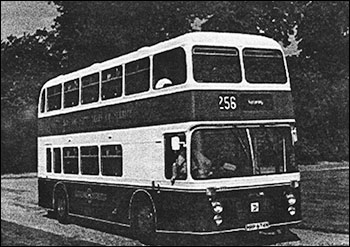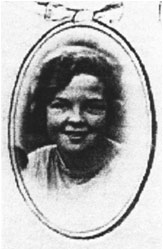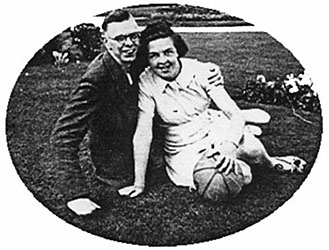| Written by Stan Simons 1999, reproduced by kind permission of his daughter Diana Glasspool. |
|||||||
|
|||||||
|
There were two elderly ladies, living in At the age of fifteen I obtained a part time job at the Kettering Evening Telegraph. I helped in the publishing department producing the 'Leader and Guardian' which came out once a week, on a Friday. This always had a children's competition page, giving away quite nice prizes. I won a number of these until I was banned. Mr.Bellamy was the Publisher and I had to be there at 6.00am, as the 'Leader' started rolling off the press at that time. Saturday afternoons I was there again helping on the 'Pinkun', the sports paper with all the football results. I can still visualise the sub-editors and reporters laying on their desks and tables, telephones stuck to their ears. During the summer school holidays of 1932 I obtained employment at a leather factory. This lasted a week, as I couldn't stand the smell of untreated leather. My Dad then got me a job in the clicking room of a large boot and shoe factory, leading to pattern cutting. Again this only lasted about a week; it wasn't my cup of tea. After the end of the holidays, and these episodes, I went back to school and no one was any the wiser. I then did another full year in the sixth form before leaving to obtain permanent employment. Good jobs were not easy to find in those days and progressing to University for an ordinary middle class lad almost unheard of. You had to have a family with money, and we had very little. Eventually I obtained employment with Frosts Bus Company of My job consisted of checking the waybills and cash brought in by the conductors. Each ticket had a separate value and the conductor had a Bell Punch machine. When he sold a ticket this was removed from the rack he carried and a hole stamped in it from this little machine. The ticket inspector was essential, as it was easy to swindle the Company. If the conductor had a friend on the bus he would give him a used ticket, or issue one of a lower denomination for the journey. Two brothers, Harold and John owned Frosts. Harold was the manager and John the engineer. They had quite a fleet of buses and coaches, among them Reos, Lancias, Leyland PLSC3 buses and Tiger coaches. They had the monopoly of the service from Harold owned a Lancia car and in the summer he would sometimes take me with him and his wife to the seaside, for a day's outing. On one occasion his wife went into the sea and got out of her depth; she couldn't swim. I went in and rescued her and forever afterwards Harold said I had saved her life and was eternally grateful. At Frosts we had a Thornycroft bus with a Dorman Ricardo diesel engine and I actually had a go at driving this, out of service of course. This was the one and only time I have driven a bus.
During 1933/36 United Counties Omnibus At that time the buses were being repainted from red, white and blue to green and cream. Now as part of Stagecoach they have reverted back to red, white and blue. The first diesel bus they had was the aforementioned Thornycroft that came with the Frosts purchase. Most buses were hand-cranked in those days, no starter motors. Many a driver sprained or even broke his wrist trying to start the engine. Prior to the Second World War I was Purchasing Officer, and as such in a reserved occupation. The winter of 1939/1940 was dreadful with loads of snow and ice. One day my friend Pat Partridge, later superintendent of Stony Stratford depot and I tried to get home in freezing fog. I walked in front of the bus with a torch, whilst Pat sat on the wing shouting instructions to the driver. We eventually got to Finedon, where Pat lived, but could go no further. Another friend, Norman Miller, and I, slipping and sliding on the ice, managed to reach Burton Latimer.
My girl friend, Mary Ashby, lived in Norman Miller joined the R.A.F. and became a Spitfire pilot. Unfortunately he crashed and was killed. They gave him a full military funeral, and he is buried in Burton Latimer Churchyard. He was an only child and his parents grieved for him until the end of their lives. Nothing in his bedroom was moved, only to clean. They turned to spiritualism for solace. After this dreadful winter the Company Secretary, Mr.Norman Rolfe, said he had got to apply for a further six months extension to my reservation. I told him not to bother as I would rather join the Forces than go through the same again. I was discharged from the Army in June 1946, more of this later, but someone else was in my old job, so I spent nearly a year in the Wages Office. Frank Ward was the Chief Wages Officer. In January 1947 we had the worst snow blizzard since 1894, and it was virtually impossible to get out of Burton Latimer, where we were living. I managed to struggle through to Burton Railway Station; there was no sign of life but down the track I could see a train, about half a mile away. After a time it started moving and eventually the engine pulled up along side me. It was the Royal Scot, a huge locomotive, the driver looked down at me and said, "Where are you going mate;*' I replied that I wanted to get to I then walked, through the snow, to Wellingborough Depot but of course the town was totally snowed in. At last one of our single-decker buses arrived, driven by Frank Chambers, the Chief Driving Instructor. It was loaded with drivers and conductors, all with spades and shovels. They had managed to dig their way through, so I went back with them. I have never seen anything like it, in some places the snow went over the top of the trees, about 16ft high. I had to stop with friends in |
|||||||
|
|||||||


